
Code Coverage is an important metric in software testing. Let’s dive in to it –
Software testing assesses application quality. Do we need to assess testing quality as well? Yes, the test strategy, assets, and practice have distinct quality aspects. Some of the aspects of testing quality are listed below:
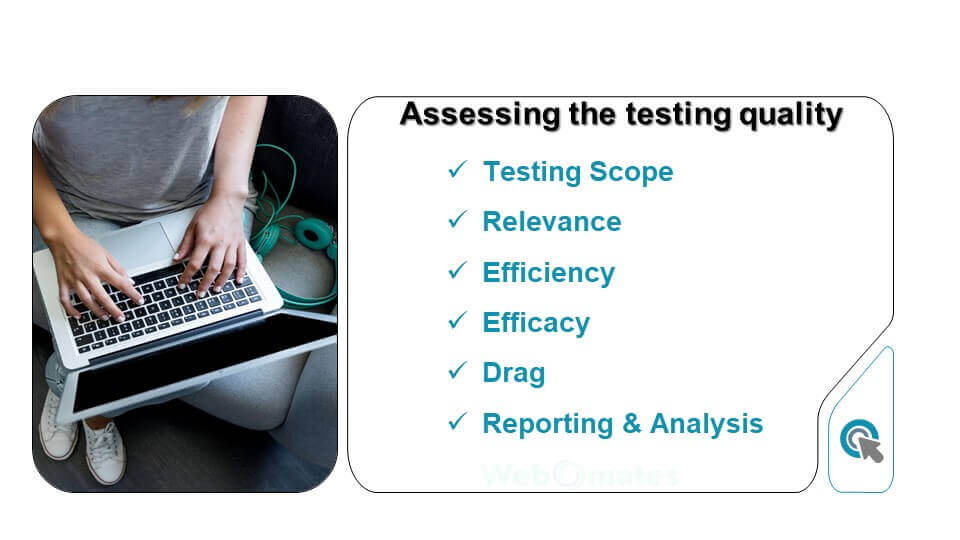
This article focuses specifically on the quality of application scope. The methods we can use to assess scope are threefold:
These three methods are complementary and should be used together.
Code coverage has the advantage of being objective since it is provided by a computer and cannot be disputed or subject to opinion. Furthermore, the heavy lifting is done by the computer, though a little labor is required to set it up using the tools available.
So code coverage is an important mechanism for assessing one aspect of test quality. It provides several types of quantitative metrics at various application code hierarchies, as well as qualitative data – displays of annotated source code, showing lines exercised and not exercised.
In simpler words, “Code coverage is software metrics for the number of lines, branches, and conditions of code exercised during the execution of your test suite.”
Any line of code that has not been validated is potentially a ticking time bomb waiting to go off. In a way, code coverage is a preemptive measure to find issues before the code goes to production. Additionally, code coverage is extremely vital for understanding parts of the code that are rarely executed, such as code for handling exceptional and atypical scenarios.
Good Code coverage is the result of well-defined QA Ops practices and is your safety net that prevents disasters. Inculcating good design, execution, and quality process from the onset is the way to go.
There are multiple criteria used by developers and test engineers to ascertain the code coverage. The most commonly used are listed below.
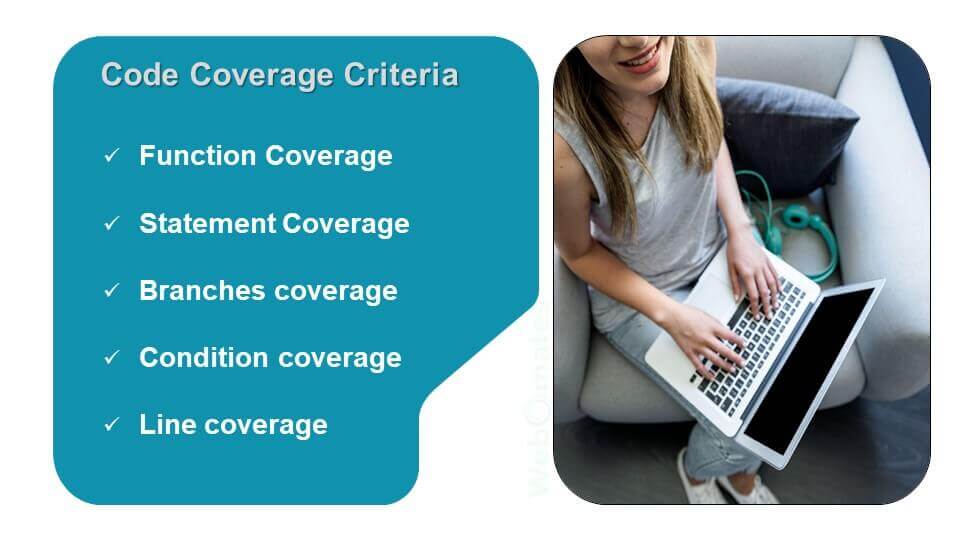
Besides these, depending on the type of product Finite State Machine coverage, transition coverage, register toggle coverage, etc. are also considered while calculating code coverage.
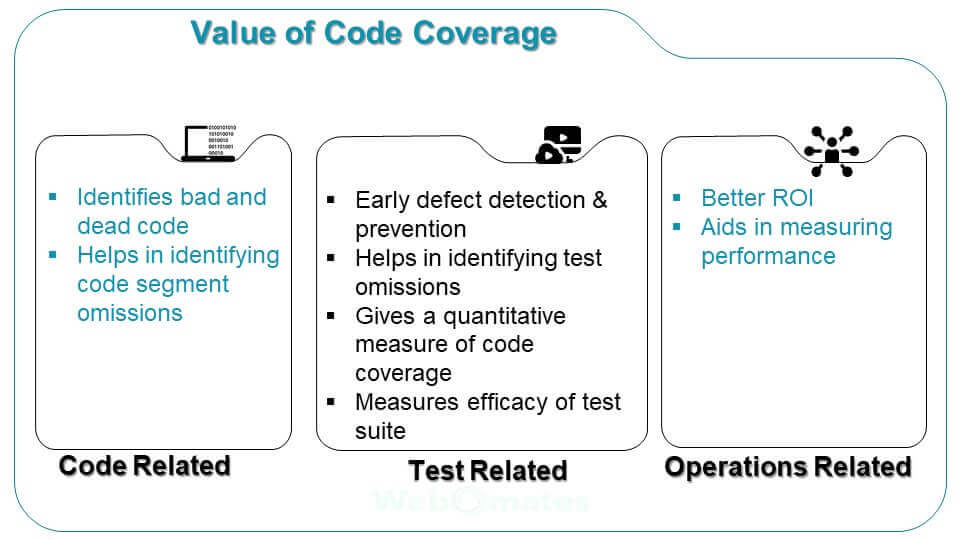

Code coverage requires language-specific libraries, IDE plugins and command-line tools that instrument the code, measure it and generate reports. It can be done pre-deployment during a build, or post-deployment at runtime.
With modern platforms, the setup of code coverage is all in the DevOps domain. Developers do not have to change the application code itself to support code coverage assessment. Only changes to build, pipeline and application deploy definitions are required.
Code coverage is typically measured as part of a unit test run with extra tooling. The test run could be executed on a developer’s workstation, e.g. in a developer’s IDE plugin, or local build. A unit test run could also be executed on a centralized build system, in a post-compilation stage, that is part of a build and deploy pipeline.
Code coverage may also be done as part of functional, integration and system test run. The application must be run in a special instrumented mode. It works like this:
In both contexts, the reports can be viewed centrally by a CI/CD tool or analysis tool like SonarQube. Refer the picture below for further explanation.
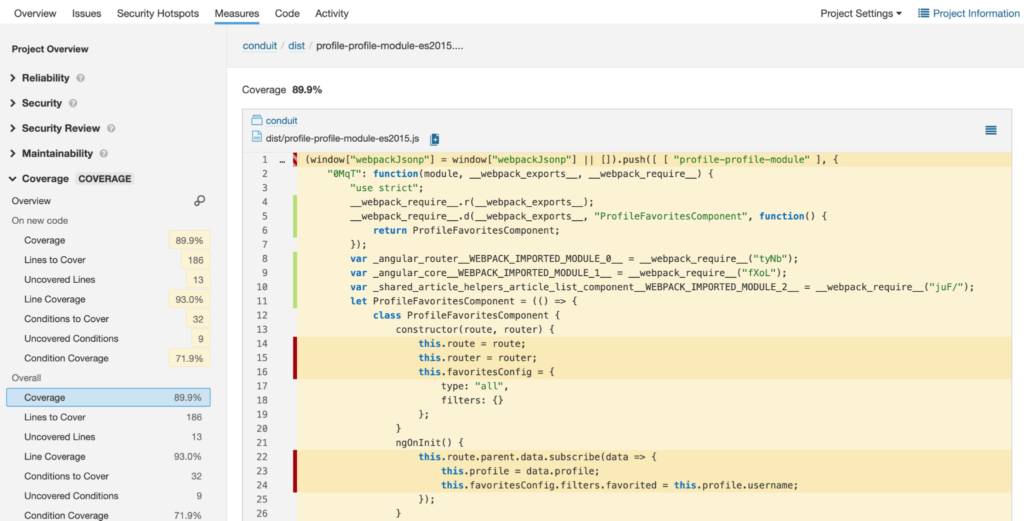
Metrics are shown on the right and on the left a specific file is displayed. The vertical coloring just to the right of the line numbers indicates the coverage assessment. The striped red line annotation means partially covered, red line not covered and green covered (exercised).
Despite of being a valuable measure, organizations lack the will and resources to implement comprehensive code coverage. Why is it so?
There are times when the business team ends up over-committing and the delivery runs on an extremely tight schedule. This is the result of bad management practices. The teams end up developing and testing by cutting corners at different stages resulting in putting metrics like code coverage at a lower priority. Little do they realize that today’s “unrealistic” fast delivery may result in high maintenance and extra cost/effort tomorrow.
Organizations need to have a seamless exchange of information between all the teams. Any tests that are written without a detailed requirement analysis are brittle. Any modifications in requirements or design need to be communicated to the test development team to keep the test base in sync with the development.
Now, imagine if this does not happen because proper QA Ops were not in place.
Neither of the above-mentioned scenarios is ideal when it comes to code coverage.
When there is too much focus on code coverage, then the testing team may end up writing tests to cover the modules/sections which do not hold much business value. This is an indicator that indicates that the organization needs to improve its QA Ops practices.
Huge projects span months with multiple teams working on them. The code base is large and keeps evolving as requirements keep adding/changing. This results in certain sections which made sense earlier but are no longer important. Such legacy code or unused (dead code) is a burden on the testing team. Covering it fully is a time-consuming process and removing it may inadvertently impact some functionality.
Creating tests for all the conditions for all possible combinations of input parameters is a herculean task.
It is a good idea to include code coverage metrics for the Continuous Integration flow of your CI/CD pipeline.
Code coverage may not be a perfect testing metric but it provides actionable data that when used with other testing metrics helps in significantly improving overall quality. It requires minimal human intervention if done using reliable testing tools.
Webomates CQ is an ingenious testing tool that encompasses 14 AI-based testing tools which are used right from the test case estimation to test case generation, execution, and test result analysis.We offer code coverage as an optional add-on to our AI test automation.
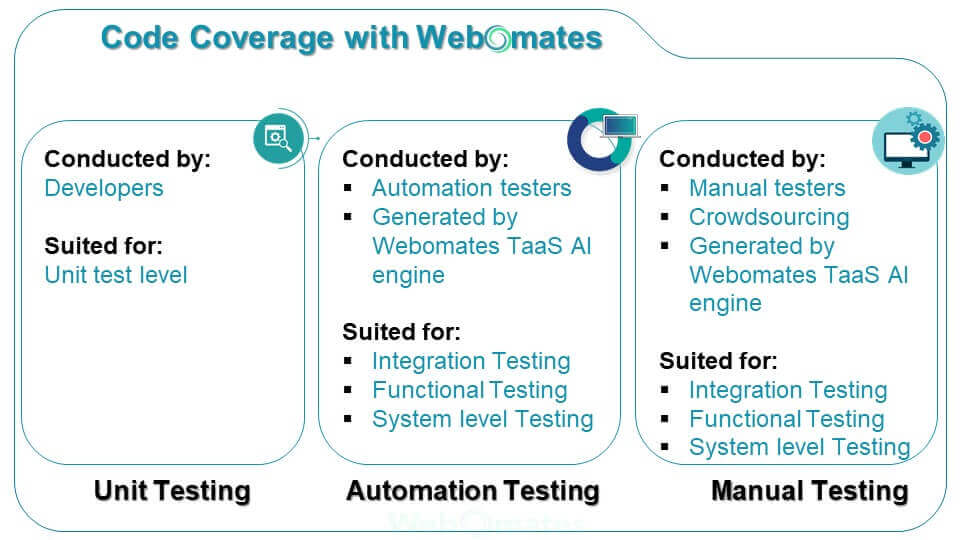
Webomates CQ enables code coverage assessment of Web-based front-ends (Javascript) as well as backend APIs and services (Java, .NET, NodeJS, Python, etc.) during automation testing. CQ supports robust and widely supported coverage tools such as Istanbul for Javascript and Jacoco for Java.
CQ offers both UI and API testing. The application backend may be tested directly by API tests, or indirectly by the UI, or a combination of both to improve coverage.
CQ integrates with the code coverage feature in the popular static code analysis tool SonarQube. The tool enables customers to view coverage metrics for a new code added, overall code, by package/directory and by file. Metrics are available by lines, branches and conditions. Additionally, customers can inspect source code that is visually tagged as covered or uncovered.
The code coverage data is provided as an input into a SonarQube static code analysis scan. Typically, this is orchestrated in a CI/CD pipeline. Quality gates can be set as part of an SDLC process, for example, a LOC coverage threshold could be required before promoting a build to production.
CQ automation testing with code coverage can augment a customer’s existing unit test coverage practice, improving the total code coverage in all forms of testing. The coverage data may even be overlayed or merged to a reporting tool such as SonarQube.
Get code coverage with no effort with Webomates by clicking here and scheduling a demo, or reach out to us at info@webomates.com
If you liked this blog, then please like/follow us Mark or Webomates
Tags: AI Testing, Artificial Intelligence, Code Coverage, Code Coverage Criteria, DevOps, Intelligent automation, Test Automation, What is Code Coverage?
Test Smarter, Not Harder: Get Your Free Trial Today!
Start Free Trial
Leave a Reply